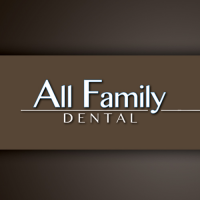Dr. Richard Timm Explains Sleep Apnea and Offers Treatment

Oakdale, MN -- (ReleaseWire) -- 05/23/2013 --Dr. Timm explains that, “There are two types of sleep apnea - obstructive and central.” Snoring and sleep apnea are breathing disorders that occur during sleep due to narrowing or closure of the airway when the muscles relax during sleep. Snoring is caused by partial closure of the airway caused by soft tissue in the back of the throat collapsing. In obstructive sleep apnea (OSA), the airway totally closes many times during the night and can reduce oxygen levels in the body and disrupt sleep. This causes the brain to react to the lack of oxygen by alerting the body to arouse from sleep. “This can occur hundreds of times a night resulting in excessive daytime sleepiness, clenching/grinding of the teeth, myofascial pain, temporomandibular joint disorder (TMD), irregular heartbeat, high blood pressure, reflux, depression, heart attack, stroke, and even death,” states Dr. Timm.
Central sleep apnea (CSA) is when you repeatedly stop breathing during sleep because the brain temporarily stops sending signals to the muscles that control breathing. Central sleep apnea is not the same as OSA, which is due to a blockage in the airway. A form of CSA commonly occurs in people with congestive heart failure. Other conditions that can cause or lead to central sleep apnea include: Arthritis and degenerative changes in the cervical spine or the base of the skull, complications of cervical spine surgery, a stroke that affects the brainstem, narcotic-containing painkillers and obesity.
Dr. Timm says, “If you have any signs of sleep apnea including loud snoring, choking or gasping during sleep, sleepiness during the day at work or even while driving, memory or learning problems or feeling irritable all the time, you need to have a sleep study done.” In order to confirm a diagnosis of OSA, a sleep study is required using a polysomnogram in a sleep laboratory or home sleep study (ambulatory). A physician should be the one to diagnose the sleep disorder and then Dr. Timm will work closely together with your physician to establish the best treatment for you. Treatment options will vary depending on the level of sleep disorder, and close consultation with your treating physician is required.
Treatment options can include:
Continuous positive airway pressure (CPAP): Considered the best option for moderate to severe OSA, this provides a steady stream of pressurized air to the patient through a mask that they wear while sleeping.
Oral appliances: An oral appliance fabricated by Dr. Timm is an effective treatment option for mild to moderate OSA and for patients who cannot tolerate sleeping with the CPAP device. These appliances look similar to athletic mouth guards and help maintain an open airway by repositioning or stabilizing the lower jaw.
Surgery: When noninvasive treatments fail, surgery is another alternative. Most surgical options include reducing or removing tissue from the soft palate, uvula, tonsils, adenoids, or tongue.
Dr. Timm graduated from the University of Minnesota School of Dentistry. He then completed a Dental Residency at Denver General Hospital, Denver, Colorado. Since 1997, Dr. Timm has studied extensively and continuously in the Concept of Complete Care under the instruction of Dr. Pete Dawson at the Center for Advanced Dental Education and Dr. Frank Spear’s Seattle Institute for Advanced Dental Education. This continuing course of study combines the Art of Cosmetic and Esthetic Dentistry with the Science of Reconstructive Dentistry.
If you are concerned about your snoring or suspect you have sleep apnea or any other sleep disordered breathing problem, contact our office at (651) 731-2141 for a consultation and screening. For more information, click HERE.
Media Relations Contact
Dr. Richard Timm
http://afdsmiles.com/
View this press release online at: http://rwire.com/256066